Trucks Aren’t the only Vehicles with 4-Wheel Drive
In this article we look at the BorgWarner 4476 and 4479 transfer cases, which are all-wheel-drive units. All-wheel drive signifies that the car has the ability to send power to all four wheels all the time with no driver controls. These transfer cases are essentially the same unit with some subtle differences and are found in the Cadillac SRX models. In 2004 all SRX models were equipped with the BW 4476. In 2005 this model was equipped with both the 4476 and 4479, and from 2006 through 2009 all were equipped with 4479 units.
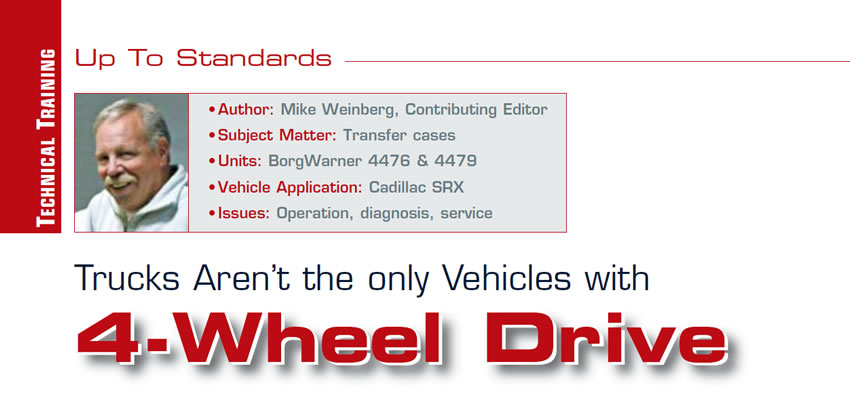
Simple Issues Turn into Nasty Problems
The same goes for manual transmissions, as the OEM will specify a fluid to match the friction coefficient of the synchronizer material. Brass or bronze rings have faded away in most late-model stick transmissions, replaced by sintered metal, paper or carbon-fiber linings, or hybrid combinations of any of the types of linings. Using an oil other than the one specified will create notchy, dragging or blocked-out shifts. This is also true for the axle assemblies, as more of these units are using limited-slip differentials to provide power to both drive wheels. Incorrect lubricants or additives will cause clutch chatter on turns and shorten the life of the friction material because of overheating from slippage.
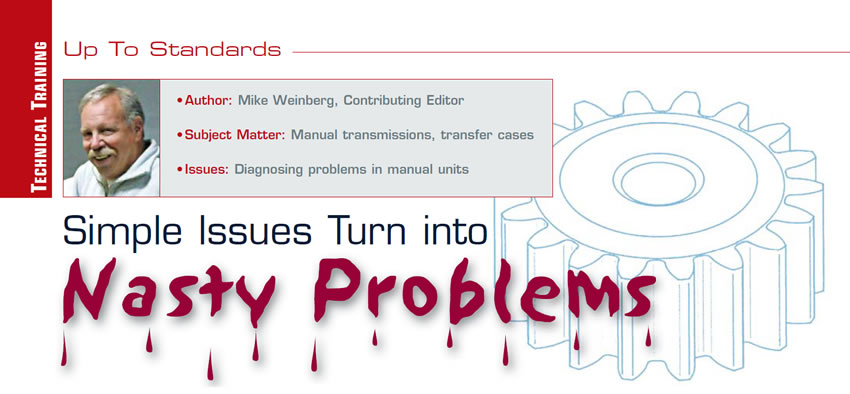
The Latest Models of Transfer Cases from Magna Powertrain
In the ever-changing world of automotive technology, we must keep up with an endless supply of new car models and their components. We will look at a new family of transfer cases manufactured by Magna Powertrain.
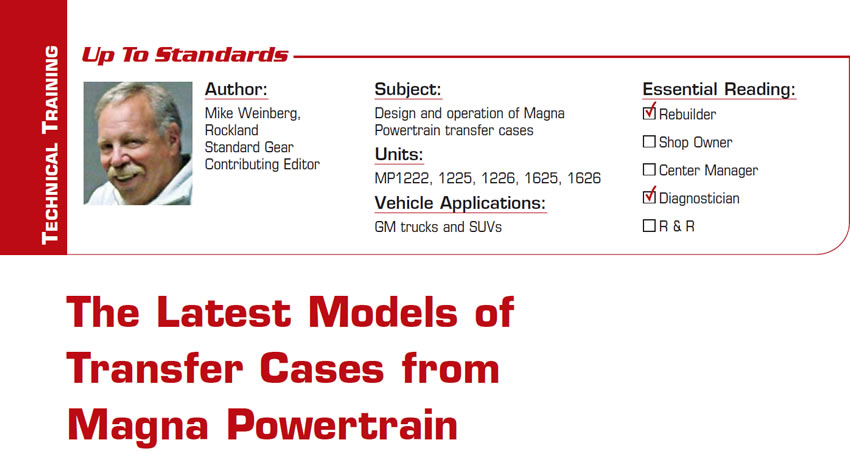
Advanced Diagnostics: Thinking ‘Outside the Box’
As automotive technology and design have reached new levels of sophistication, the role of the diagnostician has risen to critical levels. It is possible to replace transmissions and transfer cases with factory or aftermarket new or remanufactured units with relative ease. The shop needs only a qualified installer to make the swap.
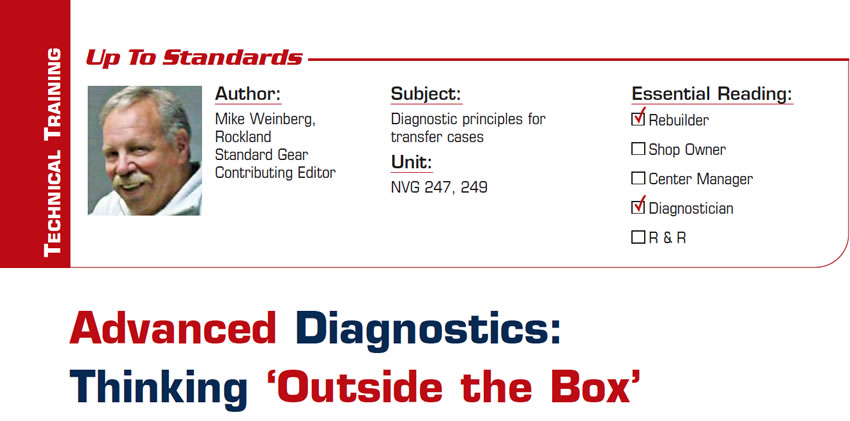
Building a Better Mousetrap
Rebuilding and remanufacturing of a host of parts have been going on almost as long as the manufacture of automobiles. It has always been economically sound policy to refurbish a used part and give it a new life, in most instances less expensively than the purchase of a new one. A good percentage of the steel being produced for new products comes from scrap, and the same is true for gold, silver, copper, aluminum etc. Production of raw materials and their transportation to the various refiners is quite expensive. and it is more economical to recycle the used parts into a usable commodity.
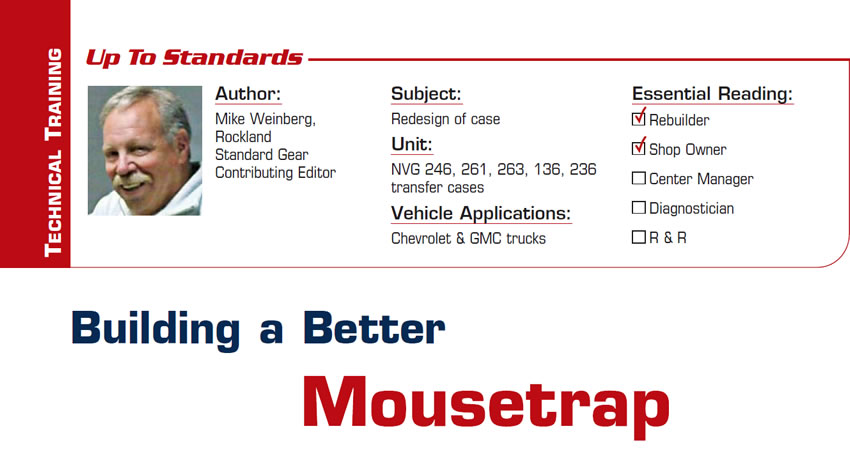
Diagnosis of Electronic ‘Active’ Transfer Cases
This is the fourth article in a series devoted to diagnosis of manual transmissions and transfer cases. Electronic “active” transfer cases cause 70% of the tech calls we receive.
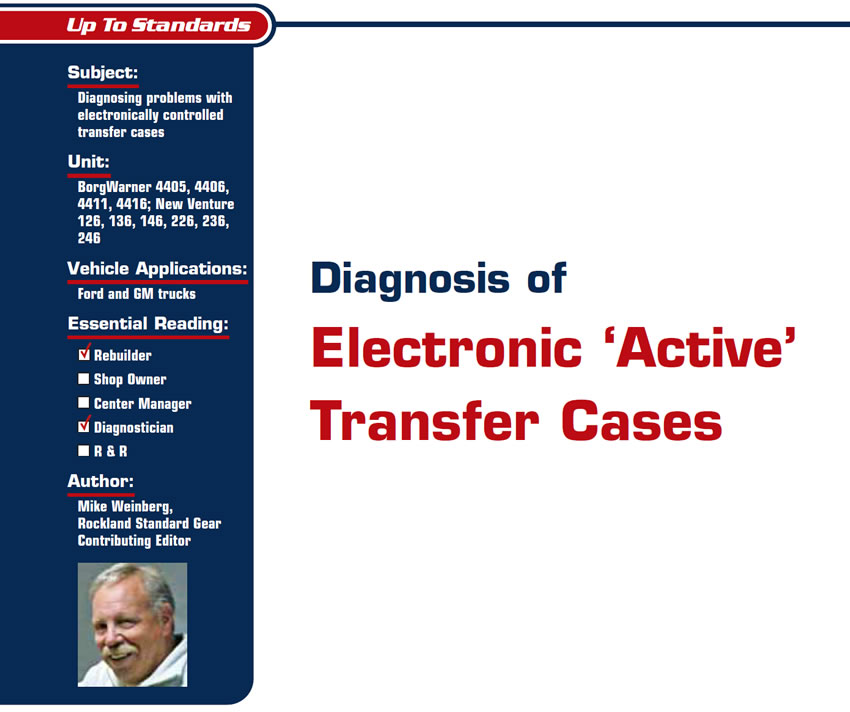
Wear in Magnesium Transfer-Case Housings
One OEM supplier estimates that 2 million transfer-case housings have been made from magnesium1. In the aftermarket, these parts have been working their way into transmission shops at an ever-increasing rate. The questions I discuss here are why magnesium transfer-case housings wear so dramatically while their similar aluminum counterparts do not, and how this affects repair choices.

Repairing the New Venture 261 & 263 Transfer Cases
For the 1999 model year, GM introduced the new Chevrolet Silverado and GMC Sierra models of pickup trucks. As part of the upgrade of these models, New Venture Gear designed a new series of transfer cases, the NV 261 and 263. These transfer cases are basically a heavier-duty version of the NV 241 transfer cases used before 1999.
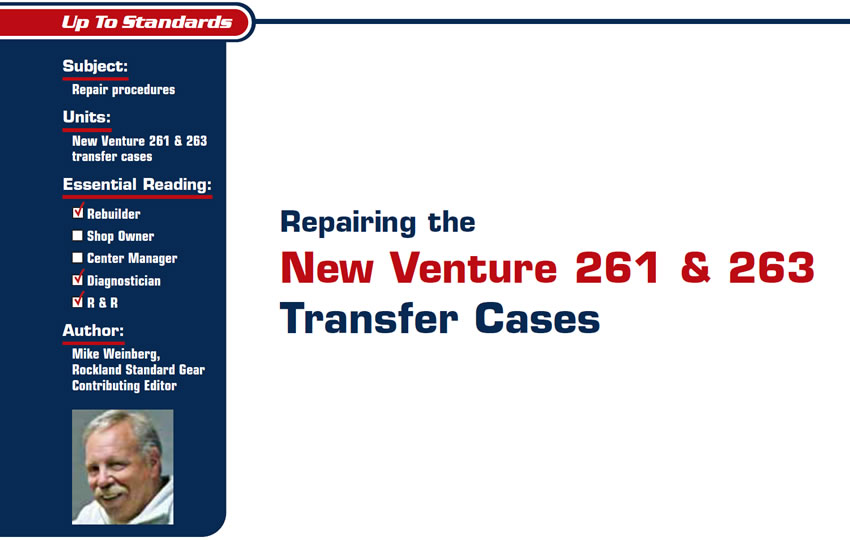
How Things Work: Four-Wheel-Drive Systems
The transfer case is a very simple concept. It is basically a power divider mounted on a transmission that is capable of splitting torque produced by the engine to drive both sets of axles on the vehicle.
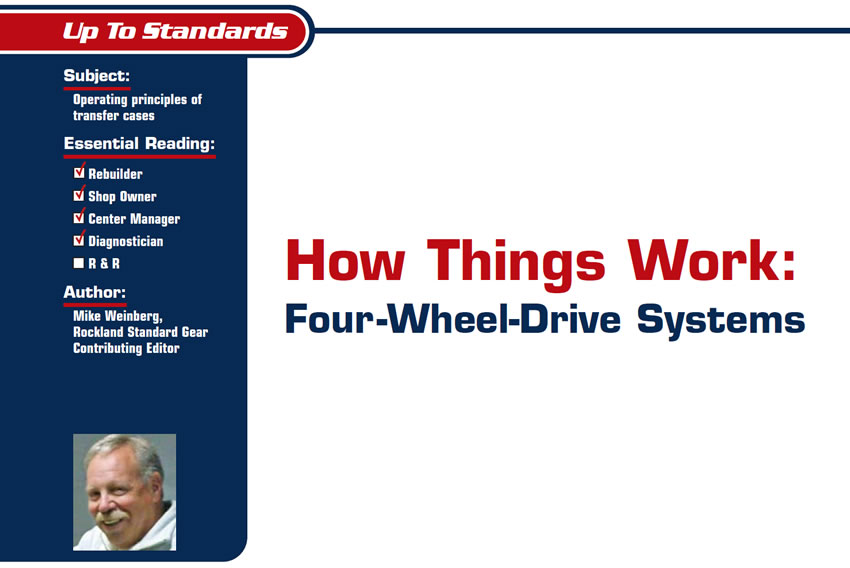
Breaking the Code on Encoders
Transfer cases have become quite sophisticated, and many designs have extensive diagnostic routines. From what we see on tech-line calls and in helping customers resolve field problems, there is a great lack of information and understanding at the shop level. This article is devoted to understanding the electronic shift functions of the New Venture Gear transfer cases.
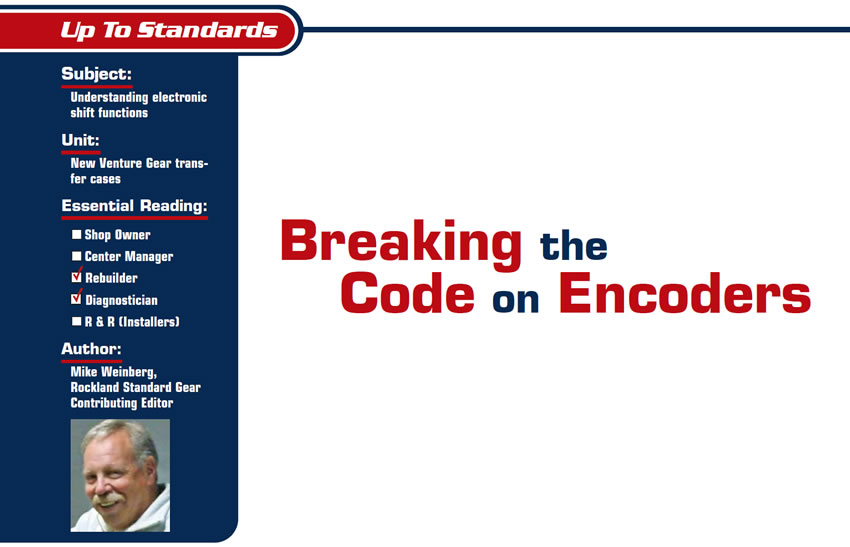
Where the Rubber Meets the Road
About 75% of the technical calls we handle are dealing with transfer-case problems, usually occurring after a transfer case has been disassembled and repaired, or another reman or new unit installed. The conversations range from, “I took the transfer case apart and can’t find anything wrong with it” to “This is the third transfer case we put in the vehicle and I still have the problem,” or “The reman transfer case I just bought from you is doing the same thing.”
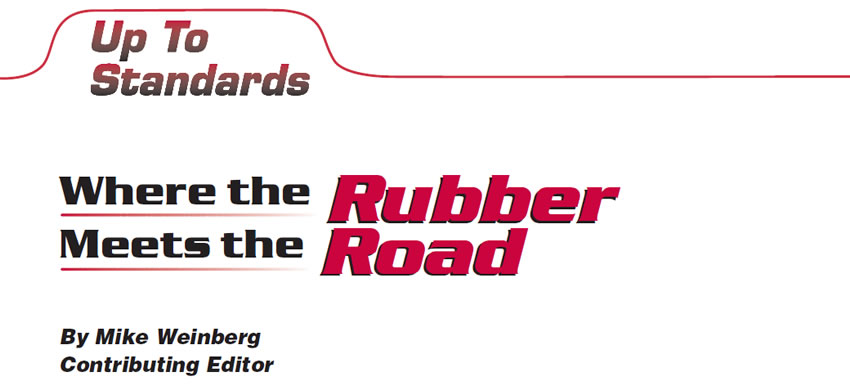
Making Money with Transmissions and Transfer Cases
At least 50% of the calls on the tech line are generated by shops that are not fully educated in the work they are doing or have not learned to look at the whole vehicle. The modern automobile is a combination of very complex interconnected systems that must function together correctly. Do not let the unit you are working on isolate your thought patterns from the whole vehicle. A knowledge of how these connected systems affect each other is a must for you to remain profitable.

